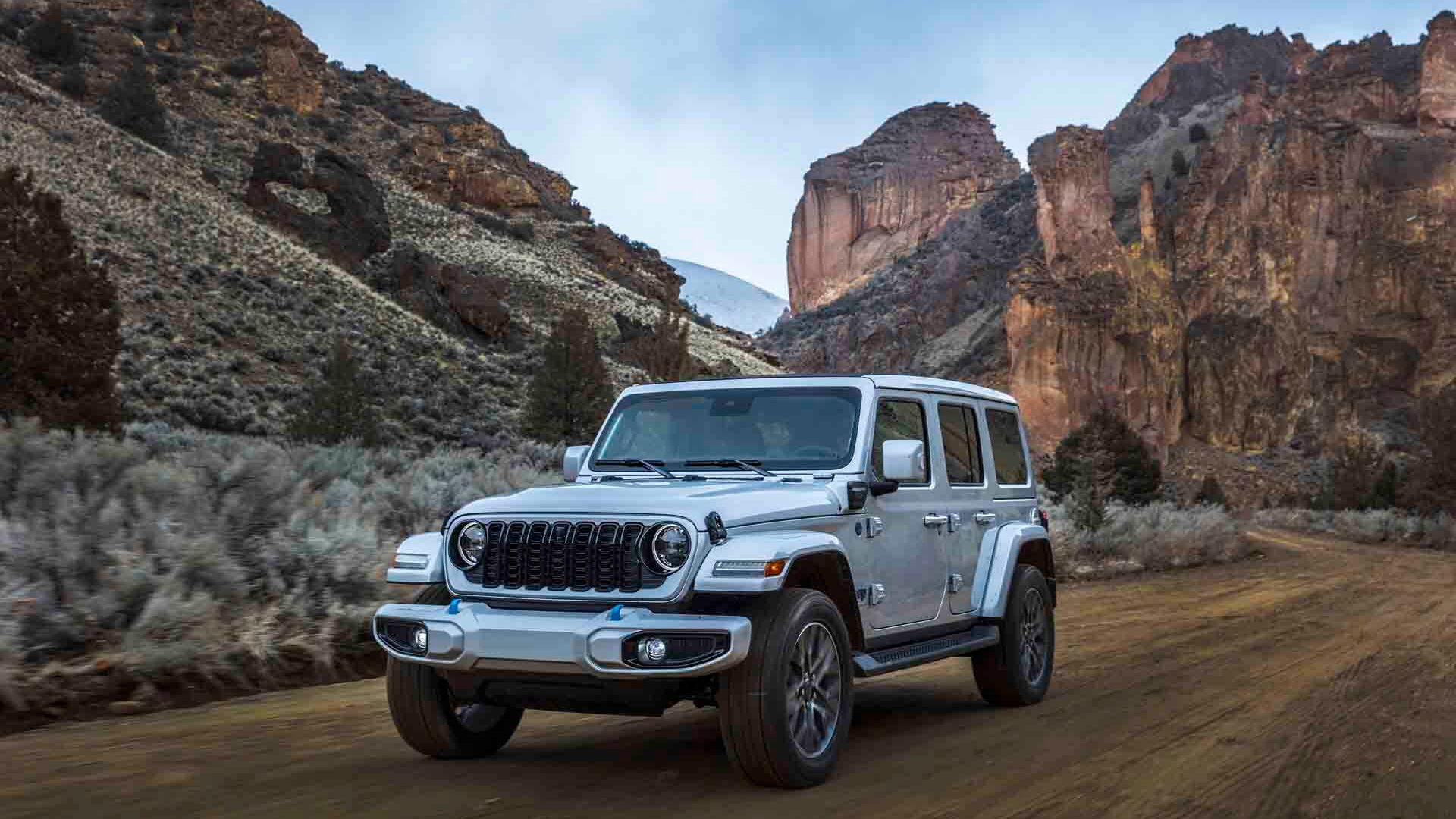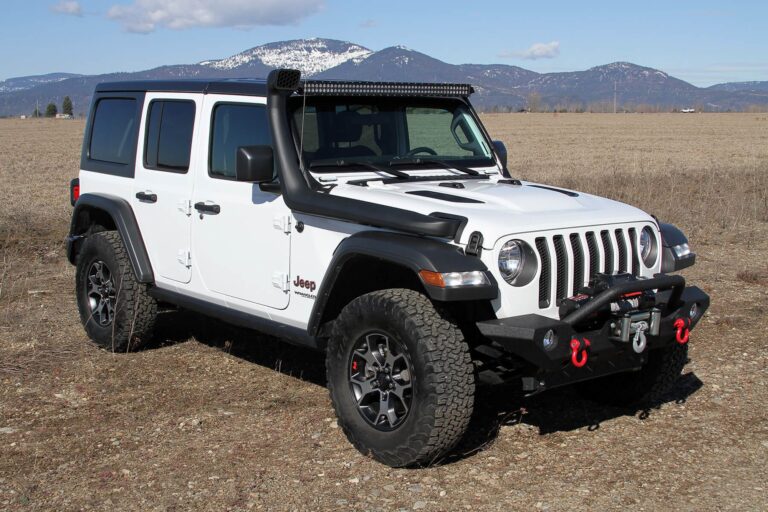Jeep Wrangler 350 Conversion Kit: Unleashing V8 Power in Your Off-Road Icon
Jeep Wrangler 350 Conversion Kit: Unleashing V8 Power in Your Off-Road Icon jeeps.truckstrend.com
The Jeep Wrangler, an undisputed legend in the off-road world, is celebrated for its rugged durability, open-air freedom, and unparalleled capability on challenging terrains. While its stock engines have served generations of adventurers well, many enthusiasts crave more: more power, more torque, and the iconic rumble of a V8. This desire often leads them to the Jeep Wrangler 350 Conversion Kit – a transformative upgrade that breathes new life into the venerable 4×4, turning it into an even more formidable beast.
At its core, a 350 conversion involves replacing the Wrangler’s factory engine with a Small Block Chevrolet (SBC) 350 cubic inch V8 engine. This isn’t just a simple engine swap; it’s a comprehensive modification requiring a specialized kit to seamlessly integrate the powerful V8 into the Wrangler’s chassis, drivetrain, and electrical systems. For many, it’s the ultimate upgrade, promising a significant boost in performance, improved reliability, and a driving experience that truly sets their Wrangler apart. This article will delve into every aspect of the 350 conversion, from its benefits and components to the complexities of installation and crucial considerations.
Jeep Wrangler 350 Conversion Kit: Unleashing V8 Power in Your Off-Road Icon
Why Consider a 350 Conversion for Your Wrangler?
The decision to undertake an engine swap is a significant one, driven by a desire to overcome the limitations of the stock powerplant and unlock new levels of performance. For many Jeep Wrangler YJ and TJ owners (the primary candidates for the traditional SBC 350 swap), the motivations are clear:
- Dramatic Power and Torque Increase: Stock engines, like the 2.5L four-cylinder or 4.0L inline-six, while reliable, can feel underpowered, especially with larger tires, heavy armor, or when tackling steep climbs. A 350 V8 typically offers double or even triple the horsepower and torque, translating to effortless highway cruising, superior rock-crawling ability, and the capacity to pull heavier loads.
- Enhanced Drivability: With more power on tap, the Wrangler becomes less strained, allowing for smoother acceleration, better throttle response, and a more relaxed driving experience both on and off the pavement.
- Legendary Reliability and Parts Availability: The SBC 350 is one of the most widely produced engines in automotive history. Its robust design, proven track record, and the sheer abundance of readily available and affordable parts make it an excellent choice for long-term dependability and easy maintenance.
- The Iconic V8 Sound: There’s an undeniable allure to the deep, throaty rumble of a V8 engine. For many, this distinctive sound alone is reason enough to pursue the conversion, adding a layer of character that stock Wranglers simply can’t match.
- Improved Off-Road Performance: The increased torque at lower RPMs provided by a V8 is invaluable for technical off-roading, allowing for greater control and less reliance on momentum, particularly in challenging situations like rock crawling or navigating deep mud.
![]()
Understanding the Components of a 350 Conversion Kit
A "350 Conversion Kit" is not a single part but a carefully curated collection of components designed to facilitate the complex engine swap. While specific contents can vary between manufacturers and the target Wrangler model (YJ, TJ, or even custom JK applications), a comprehensive kit typically includes:
- Engine Mounts: Specifically designed brackets and bushings to securely fasten the SBC 350 engine into the Wrangler’s frame, often incorporating vibration dampening.
- Transmission Adapter Plate: A crucial component that allows the SBC 350 to bolt directly to the Jeep’s existing transmission (if compatible) or to a more robust Chevrolet-compatible transmission.
- Flywheel/Flexplate: Depending on manual or automatic transmission, this connects the engine’s crankshaft to the transmission.
- Wiring Harness: A specialized harness that integrates the SBC 350’s engine management system (if fuel-injected) with the Jeep’s existing electrical system, including gauges, sensors, and power.
- Exhaust Components: Custom headers and downpipes designed to fit the 350 engine within the Wrangler’s confined engine bay and connect to the existing or new exhaust system.
- Cooling System Upgrades: A larger, more efficient radiator (often an aluminum, three-core unit), electric fan(s), and custom hoses are essential to manage the increased heat generated by the V8.
- Fuel System Upgrades: Depending on whether you’re running a carbureted or fuel-injected 350, this may include a higher-volume fuel pump, fuel lines, and a pressure regulator.
- Power Steering Solutions: Adapters or new pumps to ensure compatibility with the Jeep’s power steering system.
- Air Conditioning Integration: Brackets and lines to connect the SBC 350’s A/C compressor to the Wrangler’s climate control system.
- Throttle Cable Adapter: To connect the new engine’s throttle body/carburetor to the Jeep’s pedal.
- Miscellaneous Hardware: Bolts, nuts, gaskets, and other small but critical parts.

It’s important to distinguish between kits for carbureted SBC 350s (simpler, older engines) and those for fuel-injected versions (like a modern Ram Jet 350 or even a "350" referring to an older LS series engine, though LS swaps usually have their own dedicated kits). Most traditional "350 conversion" kits are designed for the classic carbureted or TBI (Throttle Body Injection) SBC.
The Conversion Process: A Step-by-Step Overview
While a detailed step-by-step guide is beyond the scope of this article, understanding the general flow of a 350 conversion is crucial for anyone considering the undertaking. This process is complex and requires significant mechanical aptitude.
- Planning and Preparation: Research local emissions laws, source a suitable 350 engine (rebuilt or new crate engine), acquire the conversion kit, and gather all necessary tools.
- Engine and Transmission Removal: Disconnect all wiring, hoses, and mounts, then carefully remove the existing Wrangler engine and transmission.
- Drivetrain Assessment: Inspect the transfer case, axles, and driveshafts. Many stock components, especially axles on older Wranglers, may not be robust enough to handle the increased V8 power and torque and will require upgrading.
- Transmission Adaptation/Replacement: Install the adapter plate to mate the 350 to the chosen transmission (either a beefed-up stock transmission or a new V8-compatible unit like a TH350, 700R4, or NV4500).
- Engine Installation: Carefully lower the SBC 350 into the engine bay, aligning it with the new engine mounts and connecting it to the transmission.
- Wiring and Electrical Integration: This is often the most challenging part. The new wiring harness must seamlessly integrate the V8’s sensors, ignition, and fuel system with the Jeep’s gauges, lights, and accessories.
- Fuel and Cooling System Installation: Route new fuel lines (if necessary), install the high-volume fuel pump, and set up the new radiator, electric fans, and coolant hoses.
- Exhaust System Installation: Mount the custom headers and connect them to the exhaust system.
- Ancillary Systems: Install power steering pump, A/C compressor (if applicable), and throttle cable.
- Fluid Filling and Initial Startup: Fill all fluids (oil, coolant, transmission fluid). Perform initial checks and attempt the first start-up.
- Testing and Tuning: Once running, the vehicle needs thorough testing. For fuel-injected engines, a professional tune is often critical to optimize performance and efficiency. Test all systems, including brakes, steering, and drivetrain under various conditions.
Key Considerations Before Undertaking a 350 Conversion
A V8 conversion is a significant project with many factors to weigh beyond just the kit itself:
- Cost: This is not a cheap endeavor. Beyond the kit, factor in the cost of the engine itself (new crate engines can be thousands), potential transmission upgrades, strengthened axles, driveshafts, labor if professionally installed, and unforeseen issues. Budgeting realistically is crucial.
- Skill Level & Tools: This is an advanced DIY project. If you lack extensive mechanical experience, a well-equipped garage, and specialized tools, professional installation is highly recommended.
- Legal and Emissions Compliance: This is paramount. Many states have strict regulations regarding engine swaps, especially concerning emissions. Research your local laws thoroughly. Some conversions may require specific catalytic converters, evaporative controls, or even a referee inspection to be street legal. Carbureted swaps are particularly challenging in states with stringent emissions.
- Drivetrain Compatibility: The stock axles (especially Dana 35 rear axles in older Wranglers) are generally not strong enough to handle the torque of a V8, leading to potential breakage. Upgrading to Dana 44s, Ford 8.8, or even Dana 60s is highly recommended. The transfer case and driveshafts might also need upgrades.
- Cooling System Capacity: V8 engines generate significantly more heat. An inadequate cooling system will lead to overheating, especially during off-road use or in hot climates. A robust radiator and efficient electric fans are non-negotiable.
- Fuel System Requirements: A V8 demands more fuel. Ensure your fuel pump provides adequate volume and pressure, and that fuel lines are appropriately sized.
- Braking System: With more power and potentially more weight, upgrading your brakes (e.g., larger rotors, better calipers) is a wise safety measure.
- Resale Value: A well-executed V8 conversion can increase resale value for enthusiasts. However, a poorly done or non-compliant swap can significantly hurt it.
Choosing the Right 350 Conversion Kit
Several reputable manufacturers offer 350 conversion kits for Jeep Wranglers. When selecting a kit, consider the following:
- Reputation and Reviews: Opt for kits from well-established companies with positive reviews and a track record of quality and customer support.
- Completeness of the Kit: Does the kit include everything you need, or will you be sourcing many components separately? More complete kits often simplify the process but may cost more upfront.
- Specific Wrangler Model Compatibility: Ensure the kit is designed for your exact Wrangler model and year (e.g., YJ 1987-1995, TJ 1997-2006).
- Engine Type Compatibility: Confirm if the kit is designed for carbureted, TBI, or specific fuel-injected 350 variants.
- Documentation and Support: Look for kits that come with detailed instructions, wiring diagrams, and readily available technical support. This is invaluable during the installation process.
- Aftermarket Support: Consider how easily you can source replacement parts or upgrades for the kit components in the future.
Practical Advice and Actionable Insights
- Budget Realistically: Add at least 20-30% to your initial cost estimate for unforeseen expenses. Engine swaps rarely go exactly as planned.
- Research, Research, Research: Join online forums, watch YouTube tutorials, and read build threads. Learn from others’ experiences and mistakes.
- Network with Enthusiasts: Connect with other Jeep owners who have done similar swaps. Their insights can be invaluable.
- Consider Future Upgrades: Think about what other components might need upgrading down the line (e.g., suspension to handle the extra weight, reinforced frame components).
- Professional Tune is Key: If you’re running a fuel-injected 350, a professional dyno tune will optimize performance, fuel economy, and reliability. Don’t skip this step.
- Take Your Time: Rushing leads to mistakes. Plan for the project to take longer than you anticipate.
Estimated Price Table for Jeep Wrangler 350 Conversion Kit
Please note: These prices are estimates only and can vary wildly based on the source (new vs. used parts), brand, engine condition, geographical location, and whether you DIY or hire professional help.
| Component/Service | Estimated Low Price (USD) | Estimated High Price (USD) | Notes |
|---|---|---|---|
| Basic Conversion Kit | $1,500 | $3,500 | Includes engine mounts, transmission adapter, basic hardware. (e.g., Novak, Advance Adapters) |
| Comprehensive Conversion Kit | $3,500 | $7,000+ | Includes wiring harness, cooling, fuel, power steering components, exhaust headers. |
| SBC 350 Crate Engine (New) | $3,000 | $8,000+ | New, turn-key, often fuel-injected; price varies by horsepower/features. |
| SBC 350 Engine (Used/Rebuilt) | $500 | $2,500 | Requires inspection, potential rebuild costs. |
| Transmission (Upgraded) | $1,000 | $3,000+ | e.g., TH350, 700R4, NV4500 (new or rebuilt). |
| Axle Upgrades (Front & Rear) | $2,000 | $6,000+ | For stronger axles like Dana 44s, Ford 8.8, or custom builds. |
| Driveshafts (Custom/Upgraded) | $500 | $1,500 | Required due to changes in length/angles. |
| High-Performance Radiator/Fans | $400 | $1,000 | Essential for V8 cooling. |
| Fuel System Upgrades | $200 | $800 | High-volume pump, lines, regulator. |
| Exhaust System (Custom) | $500 | $1,500 | Beyond headers, includes catalytic converters (if required) and muffler. |
| Miscellaneous Parts & Fluids | $300 | $1,000 | Hoses, clamps, fluids, sensors, small hardware. |
| Professional Installation Labor | $4,000 | $10,000+ | Highly variable based on shop rates, complexity, and unforeseen issues. |
| Emissions/Inspection Fees | $100 | $500 | Depending on state regulations. |
| TOTAL ESTIMATED COST (DIY) | $9,900 | $25,300+ | (Engine + Comprehensive Kit + Axles + Radiator + Fuel + Exhaust + Misc) |
| TOTAL ESTIMATED COST (Pro)** | $13,900 | $35,300+ | (DIY Total + Professional Labor) |
Frequently Asked Questions (FAQ) about Jeep Wrangler 350 Conversion
Q1: Is a 350 conversion worth the cost and effort?
A1: For many enthusiasts, absolutely. The significant increase in power, torque, and the classic V8 sound transforms the Wrangler’s driving experience, making it more capable on and off-road. However, it’s a major investment in time and money, so weigh the benefits against your budget and mechanical aptitude.
Q2: How long does a 350 conversion typically take?
A2: For an experienced DIY mechanic, it could take several weeks of dedicated work. For a professional shop, it might take 2-4 weeks, depending on their schedule and the complexity of the specific build. Unforeseen issues can extend the timeline significantly.
Q3: Will my stock transmission work with the 350 V8?
A3: It depends on the specific transmission. While some kits offer adapters for stock Jeep transmissions (like the AX-15 or NV3550), these transmissions may not be strong enough to reliably handle the V8’s increased power and torque, especially under heavy off-road use. Upgrading to a more robust transmission like a TH350, 700R4, or NV4500 is often recommended.
Q4: Do I need to upgrade my axles and other drivetrain components?
A4: Yes, almost certainly. The stock Dana 35 rear axle (common in many Wranglers) is notoriously weak and will likely fail quickly under V8 power. Upgrading to at least a Dana 44 or Ford 8.8 rear axle, and potentially a stronger front axle, is highly recommended. Driveshafts and possibly the transfer case may also need upgrades.
Q5: What about emissions and legality?
A5: This is a critical concern. Emissions laws vary by state and can be very strict. In some areas, engine swaps must meet the emissions standards of the vehicle’s model year or the engine’s model year (whichever is newer). It’s crucial to research your local Department of Motor Vehicles (DMV) or environmental protection agency’s regulations before starting the conversion. Some states require a "referee" inspection.
Q6: Can I use a modern LS engine instead of a classic 350?
A6: Yes, modern LS engines (often 4.8L, 5.3L, 6.0L, 6.2L) are also popular V8 swap candidates for Wranglers, offering more modern technology, better fuel economy, and often more power. However, "350 conversion" traditionally refers to the older Small Block Chevy 350. LS swaps typically require different, more specialized kits and often involve more complex wiring and computer integration.
Conclusion
The Jeep Wrangler 350 conversion kit represents a gateway to unlocking a new dimension of performance and driving pleasure for your beloved off-road machine. It’s a project for those who demand more power, superior capability, and the unmistakable roar of a V8 engine. While the undertaking is significant, requiring careful planning, substantial investment, and considerable mechanical know-how, the rewards are equally substantial. A well-executed 350 conversion transforms a capable Jeep into an absolute powerhouse, ready to conquer any trail with authority and a soundtrack that will turn heads wherever you go. For the dedicated enthusiast, it’s more than just an engine swap; it’s a profound enhancement that solidifies the Wrangler’s legendary status as the ultimate customizable off-road icon.



